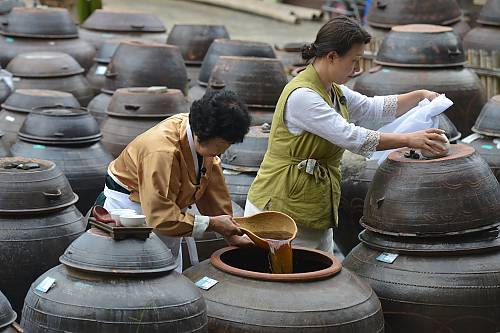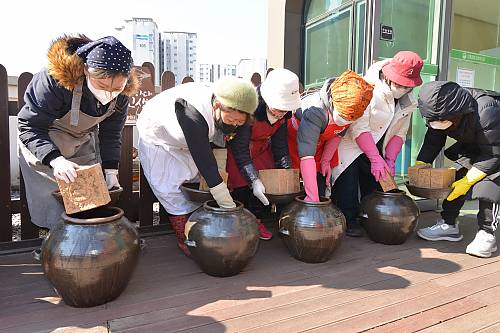Knowledge, beliefs and practices related to jang making in the Republic of Korea
Inscribed in 2024 (19.COM) on the Representative List of the Intangible Cultural Heritage of Humanity

Jang are fermented sauces – such as soybean paste, soy sauce and red chili paste – that form the basis of the Korean diet. The practice entails the entire process of making, keeping and consuming jang, from preparing the soybeans and other ingredients to ensuring the appropriate conditions for their fermentation, aging and storage. Jang sauces can be paired with vegetables, fish and meat. They can also be used to preserve food. The essential amino acids produced during the fermentation process provide a critical nutritional balance to the rice-based Korean diet. Jang sauces vary from one household to the next and are believed to embody each family’s history and traditions. For instance, some families store aged soy sauce for decades to keep the taste of the food constant over time. Jang making is practiced and transmitted within families, primarily from mothers and mothers-in-law to their daughters and daughters-in-law. Community groups, schools and universities also contribute to the transmission of the practice. Along with rice and kimchi, jang sauces are at the heart of the Korean diet. The tradition has led to related cultural practices, such as the use of amulets or the performance of certain rites to ensure successful fermentation and aging.









